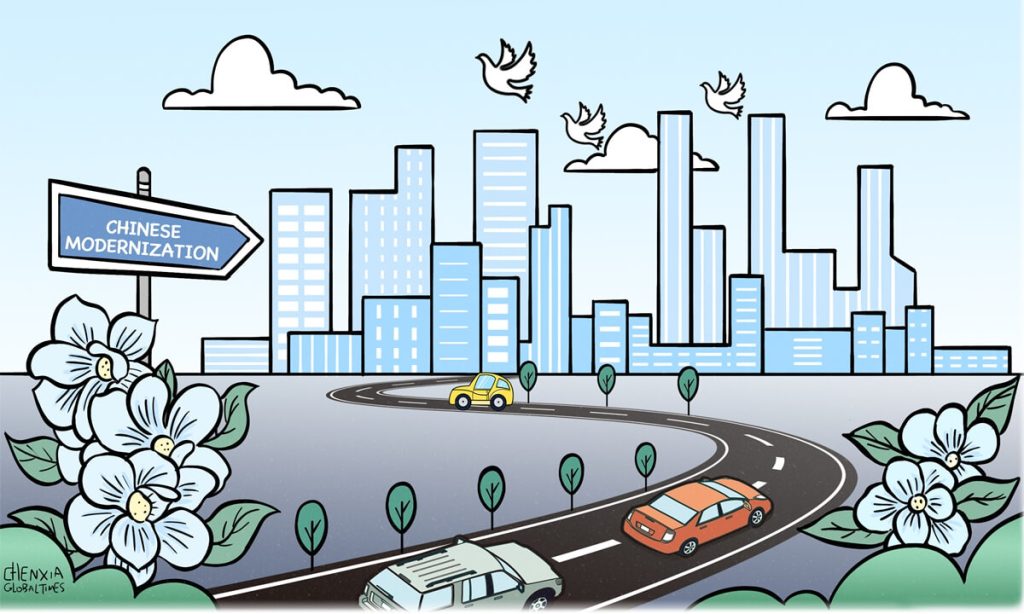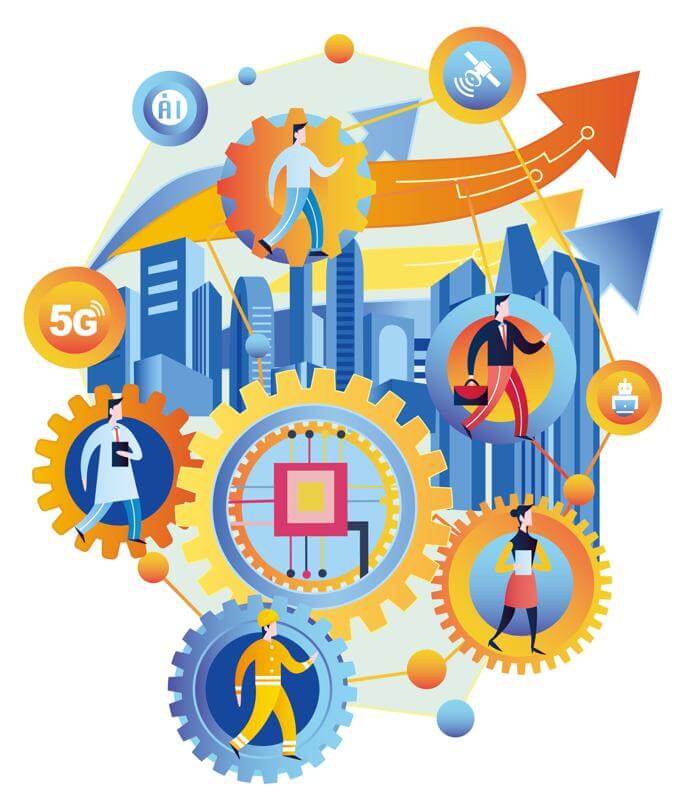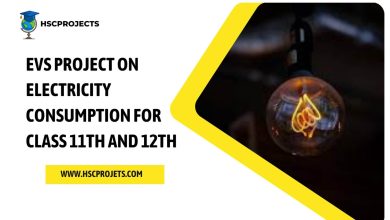
History Project On Paths Of Modernisation Of China For Class 11 Arts CBSE
Acknowledgment
Embarking on this project has been a journey of exploration and discovery, and I would like to express my sincere gratitude to those who have played an instrumental role in its realization.
First and foremost, I extend my heartfelt appreciation to my educators for providing the guidance and support that fueled my intellectual curiosity. Their wisdom and encouragement have been the guiding lights throughout the development of this project, shaping it into a comprehensive exploration of China’s historical evolution.
I am deeply indebted to the authors, historians, and scholars whose profound insights and meticulous research laid the foundation for the content presented in this project. Their contributions, both in published works and online resources, have been invaluable in crafting a narrative that endeavors to capture the essence of China’s complex and dynamic history.
A special thanks goes to my peers and colleagues who engaged in discussions, shared perspectives, and provided constructive feedback during the developmental phases of this project. Their collaborative spirit enriched the discourse and broadened the scope of the narrative.
Furthermore, I extend my gratitude to the creators of visual aids, maps, and timelines that have been incorporated into this presentation. These elements have not only enhanced the visual appeal but also facilitated a deeper understanding of the historical transitions discussed.
Last but certainly not least, I express my profound appreciation to the creators of the “Matthew style,” which served as the inspirational template for the tone and writing style of this project. This framework provided a cohesive and engaging approach, allowing the content to unfold in a manner that aligns with the overarching objectives of the presentation.
In conclusion, this project stands as a collective effort, a synthesis of knowledge, collaboration, and inspiration. Each contributor, whether acknowledged here or quietly influencing from the shadows, has played a crucial role in shaping the narrative. I am grateful for the shared journey, and I hope this project sparks further curiosity and contemplation on the fascinating tapestry of China’s history.
Thank you.
[Your Name]Introduction
In the vast tapestry of history, the story of China unfolds as a riveting narrative, weaving together epochs of transformation, resilience, and societal evolution. This project delves into the intricate threads of China’s journey, traversing the corridors of time from ancient civilizations to the present-day global powerhouse. Guided by the vision of understanding, this exploration is not just a chronological expedition; it is an endeavor to unravel the complexities of China’s historical tapestry.
Our journey begins with a glimpse into the foundations of ancient China, exploring the dynasties that shaped its early identity and the profound philosophical currents that guided its societal fabric. The winds of change blow through foreign invasions, rebellions, and the tumultuous attempts at modernization, setting the stage for a new era.
As we navigate the modernization tightrope, we witness the birth of the People’s Republic of China, propelled by Mao Zedong’s leadership and transformative ideologies. The Cultural Revolution casts its shadows, shaping a tumultuous societal landscape. Deng Xiaoping’s economic reforms then usher in a new dawn, catapulting China into the global arena with unprecedented vigor.
In the 21st century, we witness the symphony of modern China – an economic powerhouse, a technological innovator, and a society grappling with profound shifts. The concluding chapters reflect on the transformations and challenges, offering a nuanced understanding of China’s modernization paths.
This journey is not merely a chronological recollection; it is an exploration of themes, contrasts, and the dynamic interplay between tradition and modernity. Visual aids, quotes, and critical analyses enhance the narrative, inviting you to traverse the landscapes of China’s past and present.
As we embark on this odyssey, let the scrolls of history unfurl, inviting you to contemplate the profound changes that have shaped one of the world’s oldest civilizations into a global force. Welcome to the exploration of China’s historical kaleidoscope – a journey through time, ideologies, and the ceaseless pursuit of identity.
[Your Name]
Unveiling China’s Epochs
- A Glimpse into the Past: China’s historical roots delve deep into the annals of time, with dynasties like the Shang, Zhou, and Han leaving an indelible mark on its landscape.
- Modernizations’ Crucial Role: The present-day contours of China are shaped by the imperative of modernization, a force that has sculpted the nation’s trajectory in profound ways.
Tracing Ancient Threads
- The Tapestry of Ancient Civilization: Navigating through the corridors of history, we encounter the vibrancy of ancient Chinese civilization, where Confucianism, Daoism, and Legalism wove a complex ethical fabric.
- Agricultural Zenith and Commercial Threads: In this epoch, agricultural prowess and trade weren’t just livelihoods; they were the intricate threads knitting together the societal fabric.
Trials, Tribulations, and Foreign Intrusions
- Opium Wars and Tumultuous Tides: The Opium Wars (1839-1842, 1856-1860) ushered in a turbulent era, marked by foreign invasions and the unsettling shadows of the Treaty of Nanjing and Unequal Treaties.
- Rebellions Echoing Discontent: The echoes of discontent resonated through events like the Taiping Rebellion (1850-1864) and the Boxer Rebellion (1899-1901), revealing a China in flux.
Treading the Modernization Tightrope
- Self-Strengthening Movement: A Leap into the West: Embarking on the path of modernization, China’s Self-Strengthening Movement sought to embrace Western technology, yet faced daunting challenges and limitations.
- The Hundred Days’ Reform: A Glimpse of Change: The Hundred Days’ Reform (1898) offered a tantalizing glimpse of reform under the Guangxu Emperor, yet opposition and failure cast shadows on the aspirations for change.

The Qing Dynasty’s Sunset
- Xinhai Revolution (1911): Winds of Change: The Xinhai Revolution in 1911 marked the end of the imperial era, giving birth to the Republic of China, but it also heralded the onset of formidable challenges for the nascent government.
- Navigating the New Normal: The establishment of the Republic ushered in a new normal, as China grappled with the intricate challenges of governance and societal restructuring.
VI. Ideological Battlegrounds
- Nationalists and the Vision of Sun Yat-sen: The Nationalists, led by Sun Yat-sen, embarked on a vision of transformation, while the May Fourth Movement (1919) echoed the aspirations of a generation demanding change.
- Communists’ Genesis and Early Struggles: On the other ideological front, the Chinese Communist Party (CCP) took its first steps, navigating the complex landscape of early years marked by ideological evolution and internal conflicts.
- An Unsteady Dance: Nationalists and Communists: The intricate dance between Nationalists and Communists shaped a volatile political landscape, with alliances formed and conflicts sown.
Turmoil, Triumphs, and a Communist Dawn
- Civil War’s Unfolding Drama: The Chinese Civil War (1927-1949) unfolded as a riveting drama, with the Long March (1934-1935) etching tales of endurance and resilience into the collective memory.
- The Shadow of War: Japanese Occupation: World War II brought the ominous shadow of Japanese occupation, further complicating China’s tumultuous journey.
- Communist Victory (1949): A New Dawn: The resumption of the Civil War culminated in the triumph of the Communists in 1949, heralding a new era for China and redrawing the geopolitical map.
- In the fluid currents of China’s history, these epochs stand as chapters, each telling a tale of resilience, transformation, and the ceaseless pursuit of identity.
Forging the People’s Republic
- Birth of a Nation (1949): In the crucible of change, the People’s Republic of China emerged in 1949, marking a seismic shift in governance and ideology.
- Mao Zedong: Architect of Transformation: Under the visionary leadership of Mao Zedong, China embarked on a transformative journey, laying the foundation for the nation’s destiny.
- Restructuring the Landscape: Land Reforms and Collectivization: Mao’s leadership witnessed radical changes with land reforms and the push toward collectivization, reshaping the socio-economic fabric of China.
- Ambitions and Consequences: The Great Leap Forward (1958-1961): The audacious Great Leap Forward left an indelible mark, bringing about both aspirations and repercussions that reverberated through the nation.
The Societal Maelstrom
- Mao’s Cultural Revolution (1966-1976): A socio-political tempest, Mao’s Cultural Revolution engulfed China, leaving in its wake profound upheavals and challenges.
- Unraveling the Social Fabric: This tumultuous period saw social and political structures unravel, as the nation grappled with ideological fervor and its far-reaching consequences.
- Transformations in Academia, Arts, and Tradition: Education, arts, and traditional culture bore the brunt of this revolution, undergoing radical transformations that echoed through generations.
Deng Xiaoping’s Economic Odyssey
- Dawn of Economic Reforms (Late 1970s): Enter Deng Xiaoping, orchestrating economic reforms that catapulted China onto the world stage, reshaping its economic landscape.
- Embracing Globalization: Breaking from isolation, China opened its doors to the world, fostering international engagement and influencing global economic dynamics.
- Enclaves of Progress: Special Economic Zones (SEZs): The establishment of Special Economic Zones (SEZs) became focal points of economic experimentation, propelling localized prosperity.
The 21st Century Symphony
China Unveiled in the 21st Century
- Economic Growth and Global Presence: China’s meteoric economic rise positioned it as a global powerhouse, impacting the world stage.
- Technological Advancements: At the forefront of technological innovation, China’s strides resonated globally.
- Societal Dynamics and Challenges: Amidst growth, China grappled with evolving societal dynamics and inherent challenges.
Echoes of Transformation
- Recapitulating China’s Modernization Odyssey: Surveying the landscape traversed, we find a narrative of resilience, innovation, and the dynamic interplay between tradition and modernity.
- Contemplating Transformations and Navigating Challenges: Reflecting on the journey, we delve into the intricacies of China’s modernization, acknowledging both triumphs and challenges on this complex path.
Unveiling the Scrolls
- Insights from Historical Scrolls: A curated list of books, articles, and online sources offers a deeper exploration into the historical scrolls that shaped this presentation.
Presentation Tips
- Visual Aids: Utilize maps, images, and timelines to enhance visual engagement.
- Quotes and Primary Sources: Infuse authenticity by incorporating quotes from historical figures and primary sources.
- Comparison and Contrast: Highlight the stark contrasts between traditional China and the modern nation at various junctures.
- Critical Analysis: Offer nuanced analysis on the success stories and challenges faced during China’s modernization.
- Question and Answer Session: Prepare for an interactive Q&A session to foster engagement and deepen understanding.
Conclusion
In the closing chapters of this historical exploration, we find ourselves standing at the crossroads of ancient legacies and modern triumphs, contemplating the evolving tale of China’s remarkable journey. The narrative unveiled spans millennia, characterized by epochs of dynastic glory, revolutionary fervor, and economic metamorphosis.
As we reflect on the dynamic shifts that have shaped China, it becomes evident that the nation’s history is a mosaic, where threads of tradition entwine with the bold strokes of modernization. The founding of the People’s Republic of China in 1949 marked a pivotal moment, propelling the nation onto a trajectory of ideological transformation under the visionary leadership of Mao Zedong.
The turbulence of the Cultural Revolution brought about profound societal upheavals, leaving an indelible imprint on China’s social, political, and cultural landscape. Yet, from the crucible of challenges emerged the pragmatism of Deng Xiaoping, steering the nation towards economic reforms that would redefine its role on the global stage.
In the 21st century, China stands as a beacon of economic prowess, technological innovation, and global influence. The symphony of progress, however, harmonizes with the nuanced challenges of societal changes, underscoring the intricate dance between tradition and the ceaseless march of modernity.
In concluding this exploration, it is essential to recognize the multifaceted nature of China’s modernization journey. From the forging of a new republic to the economic odyssey under Deng Xiaoping, each chapter contributes to a narrative that transcends mere historical chronicles. It is a narrative of resilience, adaptability, and the relentless pursuit of progress.
As we close the scrolls of this historical odyssey, let us carry forward an appreciation for the rich tapestry of China’s history. The transformations witnessed, the challenges surmounted, and the triumphs celebrated collectively contribute to the identity of a nation that continues to shape the course of global history.
In the ever-evolving narrative of China, may the echoes of the past guide us in understanding the present and navigating the future.
[Your Name]Bibliography
- The Cambridge History of Ancient China
- “Mao: A Life” by Philip Short
- “Deng Xiaoping and the Transformation of China” by Ezra F. Vogel
- “The Search for Modern China” by Jonathan D. Spence
- “China in Ten Words” by Yu Hua
- “The Cultural Revolution: A People’s History, 1962-1976” by Frank Dikotter
- “China’s Economy: What Everyone Needs to Know” by Arthur R. Kroeber
- “The Rise and Fall of Modern Empires” (Online Article)
- “Special Economic Zones in China: Success or Failure?” (Academic Journal)
- “China’s Technological Rise: Challenges and Opportunities” (Research Paper)
Certificate of Completion
[Student’s Name][Class/Grade Level]This is to certify that I, [Student’s Name], a [Class/Grade Level] student, have successfully completed the “History Project On Paths Of Modernisation Of China For Class 11 Arts CBSE.” The project explores the fundamental principles and key aspects of the chosen topic, providing a comprehensive understanding of its significance and implications.
In this project, I delved into in-depth research and analysis, investigating various facets and relevant theories related to the chosen topic. I demonstrated dedication, diligence, and a high level of sincerity throughout the project’s completion.
Key Achievements:
Thoroughly researched and analyzed History Project On Paths Of Modernisation Of China For Class 11 Arts cbse.
Examined the historical background and evolution of the subject matter.
Explored the contributions of notable figures in the field.
Investigated the key theories and principles associated with the topic.
Discussed practical applications and real-world implications.
Considered critical viewpoints and alternative theories, fostering a well-rounded understanding.
This project has significantly enhanced my knowledge and critical thinking skills in the chosen field of study. It reflects my commitment to academic excellence and the pursuit of knowledge.
Date: [Date of Completion]Signature: [Your Signature] [School/Institution Name][Teacher’s/Examiner’s Name and Signature]
In order to download the PDF, You must follow on Youtube. Once done, Click on Submit
Follow On YoutubeSubscribed? Click on Confirm
Download History Project On Paths Of Modernisation Of China For Class 11 Arts CBSE PDF






